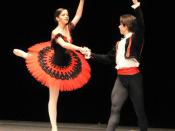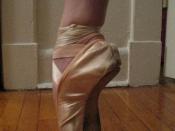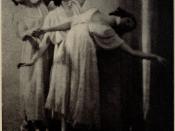Contents:
1. Introduction 2.Main part
2.1 The History of Ballet
2.2 When did Dance Start?
2.3 The Greeks and Romans
2.4 The middle Ages
2.5 The Renaissance
2.6 Louis XIV and the French Influence
2.7 1740 to Pre-Romantic
2.8 Pre-Romantic Era
2.9Romantic Era
210 Petipa and the Russian Ballet
2.11 Ballet in Britain
2.12The Russian Revolution and Nureyev
2.13 America
3. Conclusion
4. Tables and pictures
5. Bibliography
Introduction
Ballet is a form of dancing performed for theatre audiences. Like other dance forms, ballet may tell a story, express a mood, or simply reflect the music. But a ballet dancer's technique (way of performing) and special skills differ greatly from those of other dancers. Ballet dancers perform many movements that are unnatural for the body. But when these movements are well executed, they look natural.
Ballet dancers seem to ignore the law of gravity as they float through the air in long, slow leaps.
They keep perfect balance while they spin like tops without becoming dizzy. During certain steps, their feet move so rapidly that the eye can hardly follow the movements. The women often dance on the tips of their toes, and the men lift them high overhead as if they were as light as feathers.
The dancers take joy in controlling their bodies, and ballet audiences share their feelings. The spectators can feel as though they are gliding and spinning with the dancers. Simply by using their bodies, ballet dancers are able to express many emotions, such as anger, fear, jealousy, joy, and sadness. The lines of the dancers' bodies form beautiful, harmonious designs. Ballet technique is called classical because it stresses this purity and harmony of design.
In addition to the dance form called ballet, an individual dance work or performance using classical ballet technique is...


